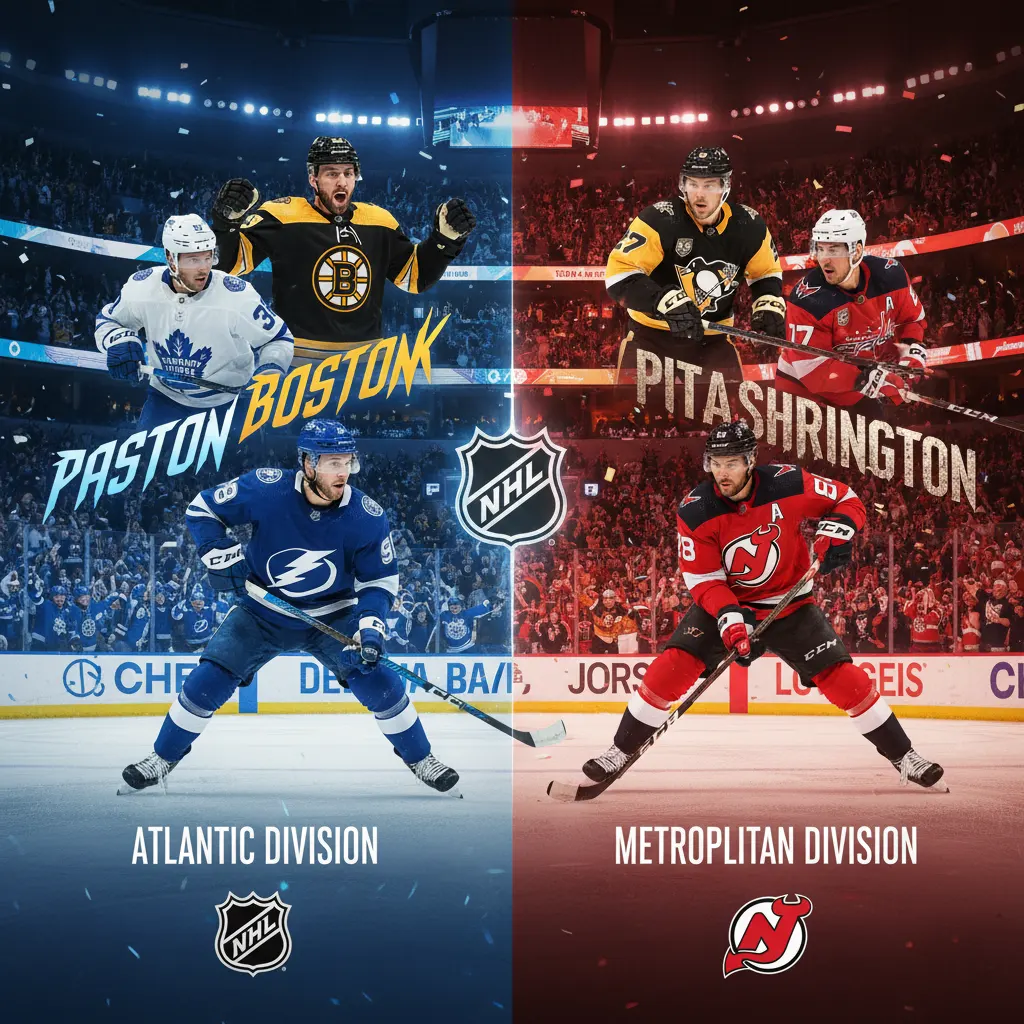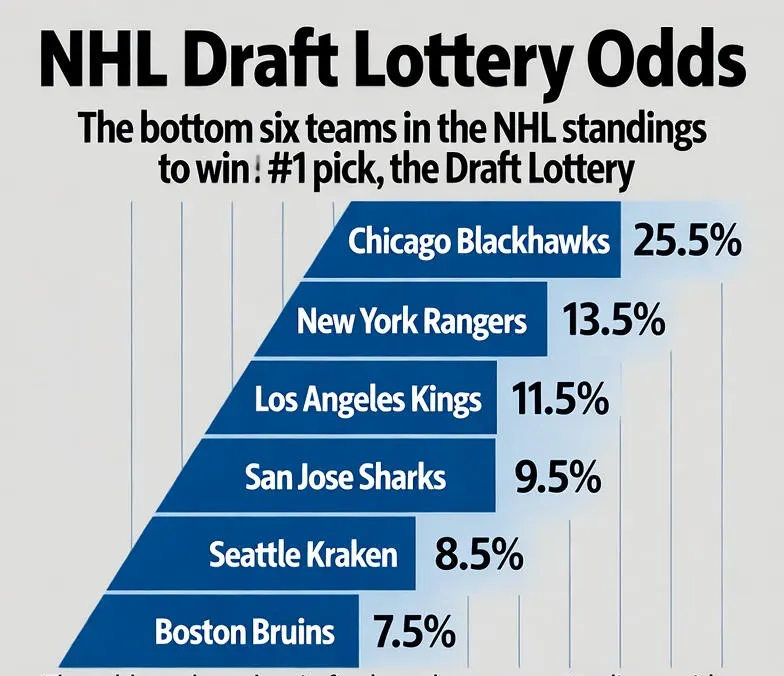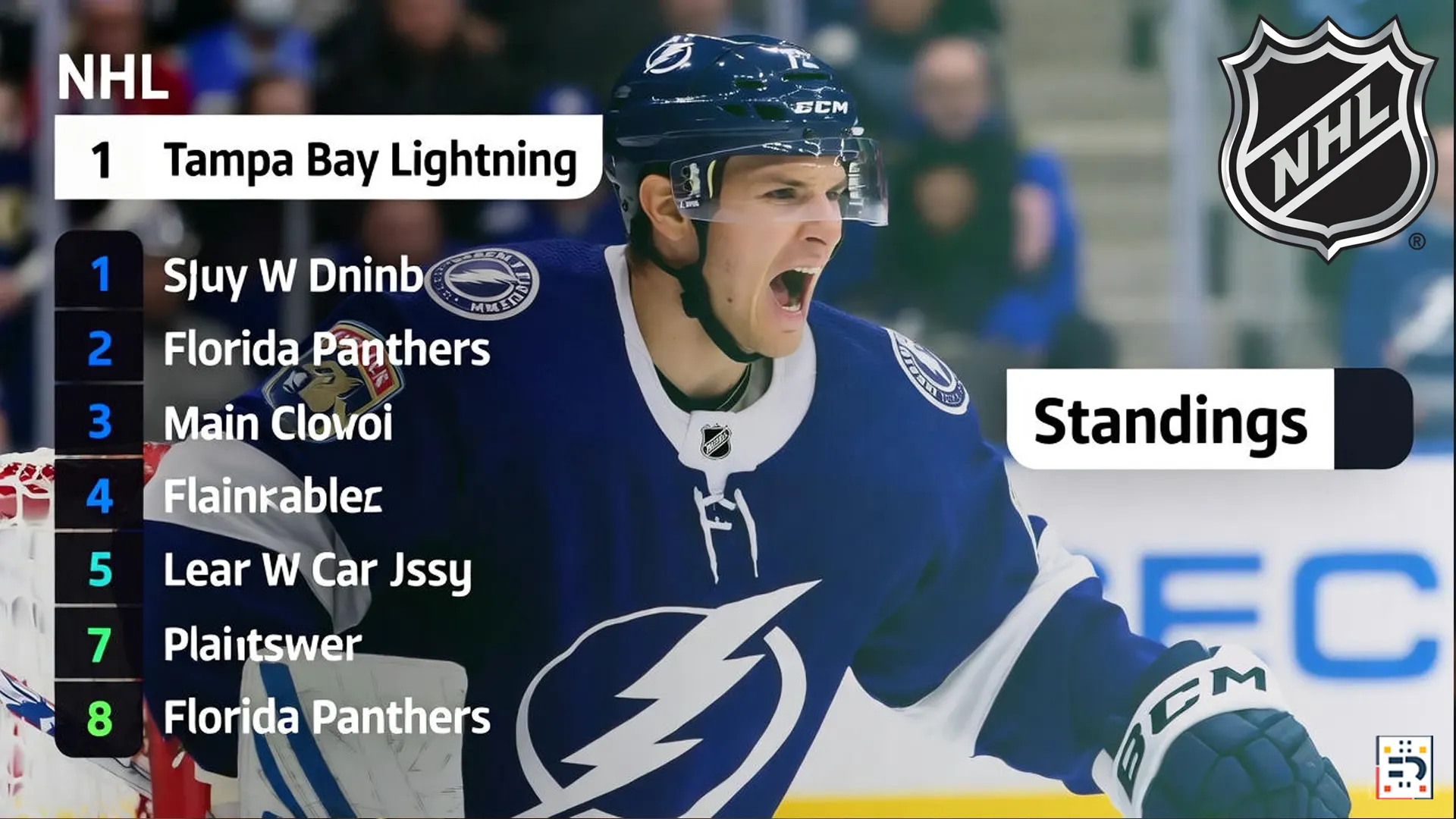Introduction
The 2025–26 NHL season marks a historic campaign as the 109th season of operation for the National Hockey League. With the regular season having begun on October 7, 2025, hockey fans across the United States are locked in on what promises to be an intense race to the playoffs. This season carries additional significance as it represents the final year of the traditional 82-game schedule before the league expands to 84 games in 2026–27.
Adding an extra layer of intrigue, the season will feature a mid-season break in February to accommodate the NHL’s participation in the 2026 Winter Olympics in Italy. This interruption could prove pivotal in determining playoff seeding and momentum heading into the postseason push.
Understanding the Current Playoff Format
The NHL playoff structure remains consistent with recent years, featuring 16 teams competing for the Stanley Cup. Each conference sends eight teams to the postseason:
Eastern Conference:
- Three divisional winners (Atlantic and Metropolitan)
- Two wild card spots for the next best teams regardless of division
Western Conference:
- Three divisional winners (Central and Pacific)
- Two wild card spots for the next best teams regardless of division
The playoff format creates intense competition not just for playoff spots, but for divisional titles and wild card positioning, as seeding determines first-round matchups and home-ice advantage throughout the playoffs.

Eastern Conference Playoff Race
Atlantic Division Battle
The Atlantic Division consistently features some of the NHL’s most competitive teams. Traditional powerhouses continue to jostle for position, with teams fighting not just for playoff spots but for the coveted home-ice advantage that comes with a divisional championship.
Key storylines in the Atlantic include teams managing salary cap constraints while maintaining competitive rosters, the integration of young talent with veteran leadership, and the always-intense rivalries that define this division.
Metropolitan Division Showdown
The Metropolitan Division typically provides one of the league’s tightest races. With several teams separated by just a handful of points throughout the season, every game carries playoff implications. The division’s physical style and competitive balance mean that point streaks and slumps can dramatically reshape the standings overnight.
Teams in this division must navigate a brutal schedule of divisional matchups while also competing against the rest of the Eastern Conference for wild card positioning.
Wild Card Watch
The Eastern Conference wild card race often comes down to the final weeks of the season. Teams on the playoff bubble must balance aggressive play to secure points with the risk of injuries that could derail their postseason hopes. The wild card spots typically feature teams that excel in different areas—some riding hot goaltending, others relying on offensive firepower or defensive structure.

Western Conference Playoff Race
Central Division Dynamics
The Central Division features a mix of rebuilding franchises and perennial contenders, creating an unpredictable landscape. Geographic rivalries intensify the competition, with teams playing each other multiple times throughout the season. These divisional games often determine not just playoff positioning but also psychological advantages heading into potential playoff matchups.
Pacific Division Competition
The Pacific Division continues to showcase diverse playing styles, from speed-based offensive attacks to defensive-minded systems. The division’s wide geographic spread creates unique travel challenges that can impact team performance, particularly during extended road trips. Teams must manage fatigue while maintaining consistency to secure a divisional crown.
Western Wild Card Scenarios
Western Conference teams battling for wild card spots face the challenge of potentially crossing into different time zones for playoff series. The competition for these spots often features teams that peak at the right time, whether through deadline acquisitions, injury returns, or young players breaking out.
Draft Lottery System Explained
For teams not making the playoffs, attention shifts to the NHL Dr aft Lottery, which determines the order of selection for the upcoming NHL Entry Draft. Understanding the lottery system is crucial for fans of rebuilding franchises.
How the Lottery Works
The NHL uses a weighted lottery system that gives worse-performing teams better odds at top picks, though not guaranteed selection. The current system features several key elements:
- Lottery Drawings: Two lottery drawings determine the first two overall selections. Teams can move up a maximum of 10 spots in the draft order, meaning only the 11 worst teams can potentially win the first overall pick.
- Odds Distribution: The team with the worst regular-season record receives the highest odds of winning the lottery, but these odds have been adjusted in recent years to discourage tanking. The lottery odds decrease incrementally for each subsequent team in the standings.
- Non-Playoff Teams Only: All 16 teams that miss the playoffs enter the lottery, though teams finishing higher in the standings have significantly lower odds of winning a top pick.
Current Draft Lottery Odds
As the season progresses, the draft lottery odds fluctuate based on team performance. Teams at the bottom of the standings naturally hold better lottery position, but the weighted system means no team is guaranteed the first overall pick.
- Bottom-Tier Teams: Franchises struggling throughout the season typically hold lottery odds between 13-18% for the first overall pick. While this provides the best chance, it’s far from certain, adding drama to the lottery drawing.
- Middle-Tier Non-Playoff Teams: Teams finishing in the middle of the non-playoff pack (spots 9-12) usually have lottery odds between 3-6% for the top selection. These teams face a difficult balance between competing for a playoff spot and potentially improving draft position.
- Bubble Teams: The teams that just miss the playoffs (spots 13-16) have minimal lottery odds, often less than 1% for the top pick. These franchises typically prefer making the playoffs over slightly better draft positioning.

Impact of the Olympic Break
The February Olympic break presents unique challenges and opportunities for NHL teams. This mid-season pause will affect the playoff race in several ways:
- Momentum Shifts: Teams on winning streaks must maintain focus through the break, while struggling teams get a chance to reset and refocus. The break can serve as a de facto second training camp for teams looking to adjust their systems or integrate new players.
- Injury Recovery: The pause allows banged-up teams to heal, potentially changing the playoff picture in the season’s second half. Players dealing with minor injuries that would typically require them to play through pain can use this time for proper recovery.
- Trade Deadline Implications: The timing of the Olympic break may influence trade deadline strategies, as teams assess their championship windows and decide whether to buy or sell ahead of the playoffs.
Key Factors Influencing Standings
Goaltending Performance
Elite goaltending remains the single most important factor in playoff success. Teams with Vezina-caliber netminders or strong goaltending tandems often outperform their underlying metrics and secure playoff spots. Conversely, teams with inconsistent goaltending struggle to gain traction in the standings regardless of offensive firepower.
Special Teams Efficiency
Power play and penalty kill performance can swing tight playoff races. Teams that excel in special teams situations often accumulate extra points in close games, which proves decisive over an 82-game schedule. A strong power play can also provide psychological advantages in tight divisional matchups.
Injury Management
Depth and injury resilience separate playoff teams from lottery contenders. Organizations with strong player development systems and prospect pools can weather injury storms, while teams lacking depth often spiral when key players miss time.
Schedule Strength
The NHL’s unbalanced schedule means some teams face tougher paths to the playoffs. Teams with favorable schedule draws late in the season can surge up the standings, while those facing gauntlets of divisional games may fade despite strong underlying performance.
Historical Context and Trends
Recent NHL seasons have shown that playoff races often remain undecided until the final week of the regular season. Point streaks in March and April can catapult teams from wild card positions to divisional titles, while late-season slumps can see presumed playoff teams miss out entirely.
The draft lottery has also produced surprising results in recent years, with teams outside the bottom three winning top picks through the lottery system. This unpredictability adds intrigue for fanbases of non-playoff teams, as hope remains until the lottery balls drop.
Looking Ahead: Playoff and Draft Implications
As the 2025–26 season progresses, several scenarios will play out:
- For Contenders: Every point matters in securing home-ice advantage. The difference between playing a first-round series at home versus on the road can determine championship trajectories.
- For Bubble Teams: The next few months will determine whether organizations commit to playoff pushes or shift focus to draft positioning. These decisions shape franchises for years to come.
- For Rebuilding Teams: While lottery odds help struggling franchises, the emphasis remains on player development and building sustainable winning cultures. Top draft picks only succeed within proper organizational structures.
The 2025–26 NHL season promises drama on both ends of the standings spectrum. Playoff races will likely remain competitive through the season’s final weeks, while lottery hopefuls position themselves for potential franchise-changing draft selections.
For American hockey fans, this season offers compelling narratives across all 32 franchises. Whether following a Stanley Cup contender’s championship pursuit or a rebuilding team’s journey toward future relevance, the combination of playoff races and draft lottery intrigue ensures engaging hockey through June’s Stanley Cup Final.
As the season unfolds, fans should monitor not just wins and losses but also key indicators like goal differential, power play trends, and goaltending statistics that often predict playoff success. The standings tell a story that evolves nightly, making this season another unforgettable chapter in NHL history.
#NHL #NHLStandings #NHLPlayoffs #DraftLottery #Hockey #StanleyCup #NHLNews


